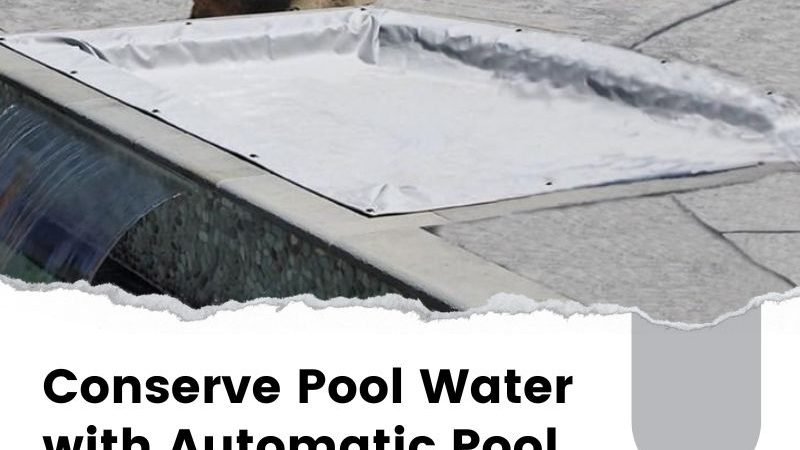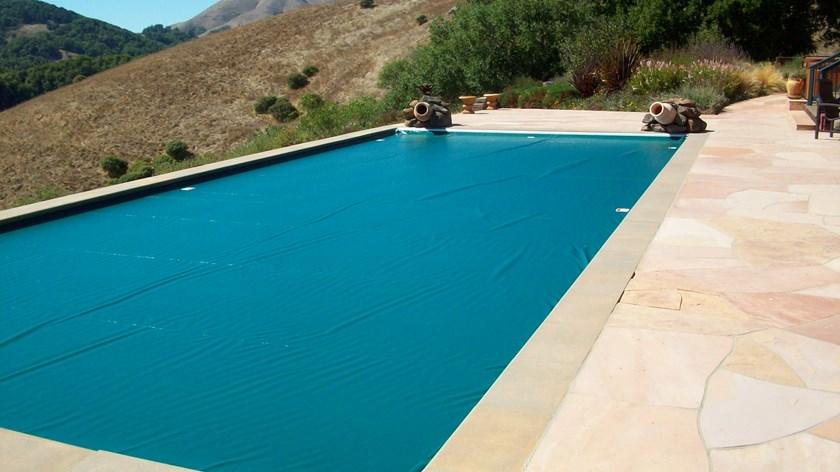
Some pool owners think that automatic pool covers in Danville are not essential. Besides, they are usually costly. However, they can be invaluable additions for safety, maintenance, and water conservation.
Some areas in California experience warm weather year-round. Droughts still occur in many parts of the state, although the reservoirs have seen some recent improvements due to higher precipitation levels.
But whether there’s drought or there isn’t, if you own a backyard pool, conserving its water is a must. While residential pools are not the biggest water consumers in California – agriculture accounts for 80% of the state’s total water use – they are particularly susceptible to evaporation, especially during the hot moths.
Causes of pool water evaporation
Several factors contribute to pool water evaporation, including:
- Surface area: Pools have a large, open surface area, which allows more water to be exposed to air, accelerating evaporation. The larger the pool, the more water it loses to evaporation.
- Climate: Evaporation rates increase significantly in regions with high temperatures, low humidity, and strong winds. California’s hot, dry summers make pools especially prone to evaporation during these months.
- Water temperature: Heated pools evaporate more quickly because the temperature difference between the water and the air increases the evaporation rate. If a pool is kept warm for extended periods, it will lose water faster.
- Wind: Wind blowing across the pool’s surface can further enhance evaporation by removing the moist air just above the water, thus replacing it with drier air, promoting additional water loss.
Evaporation from swimming pools can account for significant water loss if not mitigated. Studies show that uncovered pools can lose around 1 inch of water a week in warm, dry, and windy climates, adding up over time.
Evaporation is a culprit behind water loss from a swimming pool. Although you may not notice it initially, evaporation will dry up your pool sooner than you realize, especially during hot weather.
Ways to reduce pool water evaporation
Here are several effective ways to reduce pool water evaporation:
- Pool covers: Using a pool cover can reduce evaporation by up to 90%. Covers trap moisture and prevent water from escaping into the air, especially when the pool is not in use. Solar covers also help by warming the water, further reducing evaporation caused by heat loss.
- Liquid pool covers: These invisible barriers form a thin layer on the water’s surface. While not as effective as solid covers, liquid pool covers can still reduce evaporation by around 30% to 50%.
- Windbreaks: Installing windbreaks, such as hedges, fences, or walls around the pool, reduces air movement over the surface, slowing down the evaporation rate.
- Reduce water temperature: Lowering the water temperature minimizes the difference between the water and air temperatures, thus slowing evaporation.
- Maintain water levels: Keeping the pool at a lower water level reduces the surface area exposed to air, thereby reducing evaporation.
- Turn off water features: Water features, such as fountains and waterfalls, increase evaporation due to constant water movement and splashing.
Implementing these strategies can significantly decrease water loss through evaporation, making pool maintenance more efficient and environmentally friendly.

Automatic pool covers can prevent water evaporation
One way to reduce water evaporation is to use a pool cover. It can help reduce pool water loss by up to 90% to 95%.
A pool cover works by physically blocking the water surface from exposure to air, thus reducing evaporation through several mechanisms:
- The barrier to air contact: By covering the pool, the cover minimizes the amount of water exposed to air, reducing the air-water interaction that drives evaporation. Without this exposure, water vapor cannot escape as easily into the atmosphere.
- Trapping heat: Pool covers, especially solar ones, help retain the water’s heat, reducing the temperature differential between the water and the surrounding air. Evaporation slows because warmer water evaporates faster when exposed to cooler air.
- Reducing wind effect: A pool cover prevents wind from sweeping across the water’s surface. Wind increases evaporation by carrying away the layer of moist air directly above the pool, replacing it with dry air that accelerates water loss.
Reasons you may want to install an automatic pool cover
Any solid pool cover can prevent evaporation by trapping the vapors, thus preventing them from drifting into the atmosphere, as long as it’s made of high-quality materials.
However, despite the initial high cost of purchasing and installing an automatic pool cover, you may want to consider installing one for reasons other than water conservation.
- Convenience: An automatic pool cover opens or closes effortlessly with the press of a button, saving time and effort compared to the manual process of pulling and securing a cover. It is beneficial for frequent use or if there are physical limitations.
- Safety: Automatic pool covers enhance safety by creating a secure barrier when the pool is not in use. It can help prevent accidents, especially for families with small children or pets.
- Energy efficiency: Automatic covers help to retain heat in the water, reducing energy costs associated with heating the pool. They insulate by minimizing temperature loss during cool nights or off-season months.
- Reduced chemical Use: With less exposure to air and sunlight, automatic covers help maintain the pool’s chemical balance, reducing the need for chlorine or other chemicals. This leads to cost savings and easier maintenance.
- Debris prevention: Automatic covers keep leaves, dirt, and other debris out of the pool, resulting in cleaner water and less time spent skimming or vacuuming the pool.
- UV protection: The cover can also help block harmful UV rays, thus protecting pool surfaces and reducing the need for additional UV-resistant chemicals.
- Durability and longevity: Automatic covers are more durable and better designed for regular use than manual options, leading to a longer lifespan.
- Aesthetic appeal: Automatic covers often come with sleek, built-in mechanisms that integrate with the pool design, providing a clean, uncluttered look when the pool is covered.
- Property value: An automatic pool cover can enhance property value by offering an upscale, convenient feature that appeals to potential buyers or renters.
These reasons combine to make automatic pool covers a preferred choice for homeowners seeking convenience, safety, and overall pool management efficiency.
Pool Covers, Inc.’s automatic pool covers
Pool Covers, Inc.’s Infinity 4000™ automatic pool cover is a state-of-the-art, high-tech automatic pool cover system. It features bi-directional, anti-reversing auto-stops, a remote-located, low-voltage key switch, and power options, including a flood-resistant manufacturer-sealed motor. The system also comes with a hydraulic power pack for installations suited for hydraulic applications.
The hydraulic automatic swimming pool cover system works exactly like the electric model. It is used most often on larger pools where more power is needed, builder or pool owner preference, or if you cannot get electricity to the pool.
The Infinity 4000™ is the easiest to operate and maintain. It is also the most consumer-friendly automatic swimming pool cover on the market.
Most importantly, our automatic pool covers exceed ASTM safety standards and are considered the superior pool covers in the industry.
Due to their many benefits, including water conservation, safety, and convenience, automatic safety pool covers in Danville are a must-have for every pool owner. For inquiries about our products and services, call Pool Covers, Inc. at 1-707-864-6674 or email us at customerservice@poolcoversinc.com.









